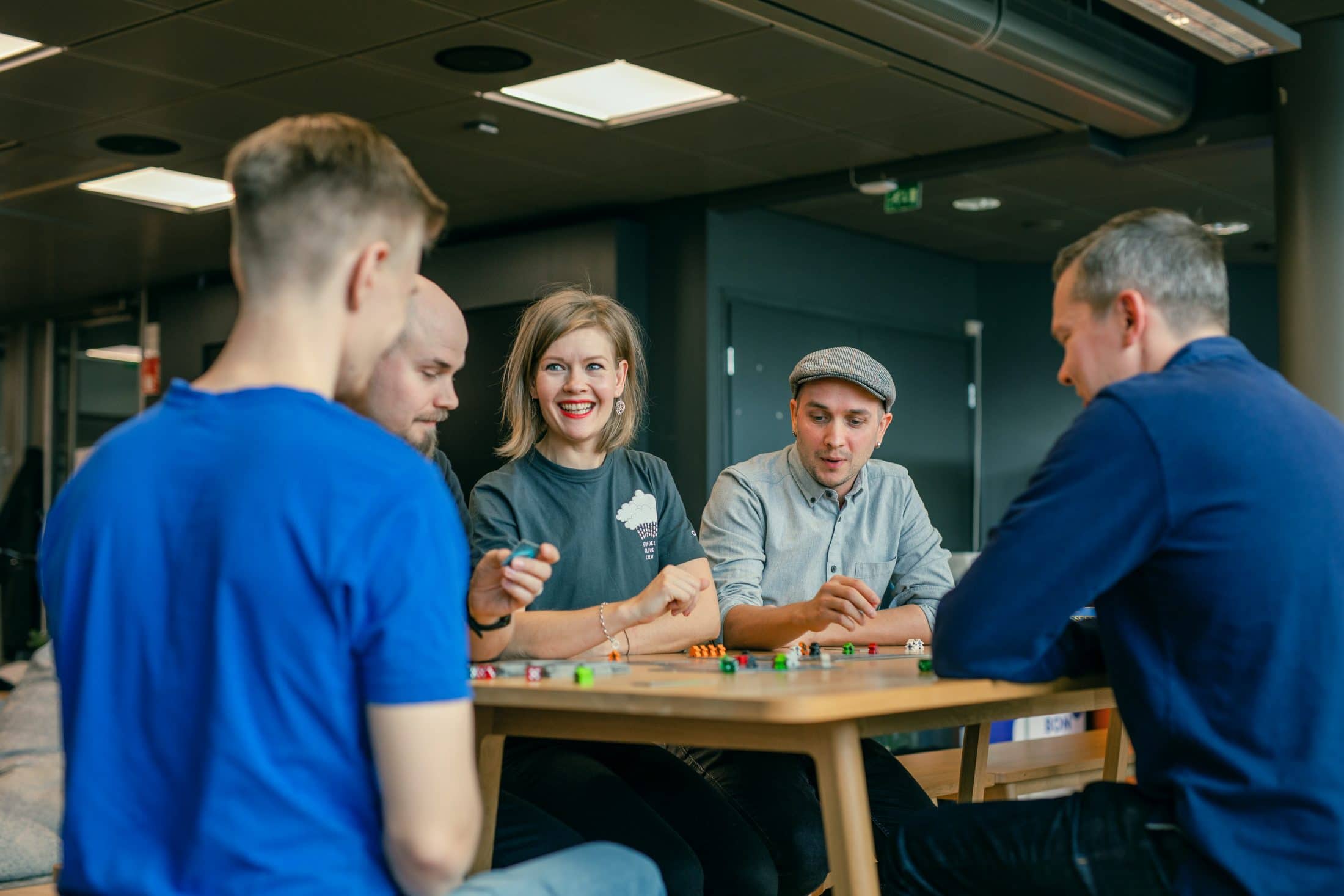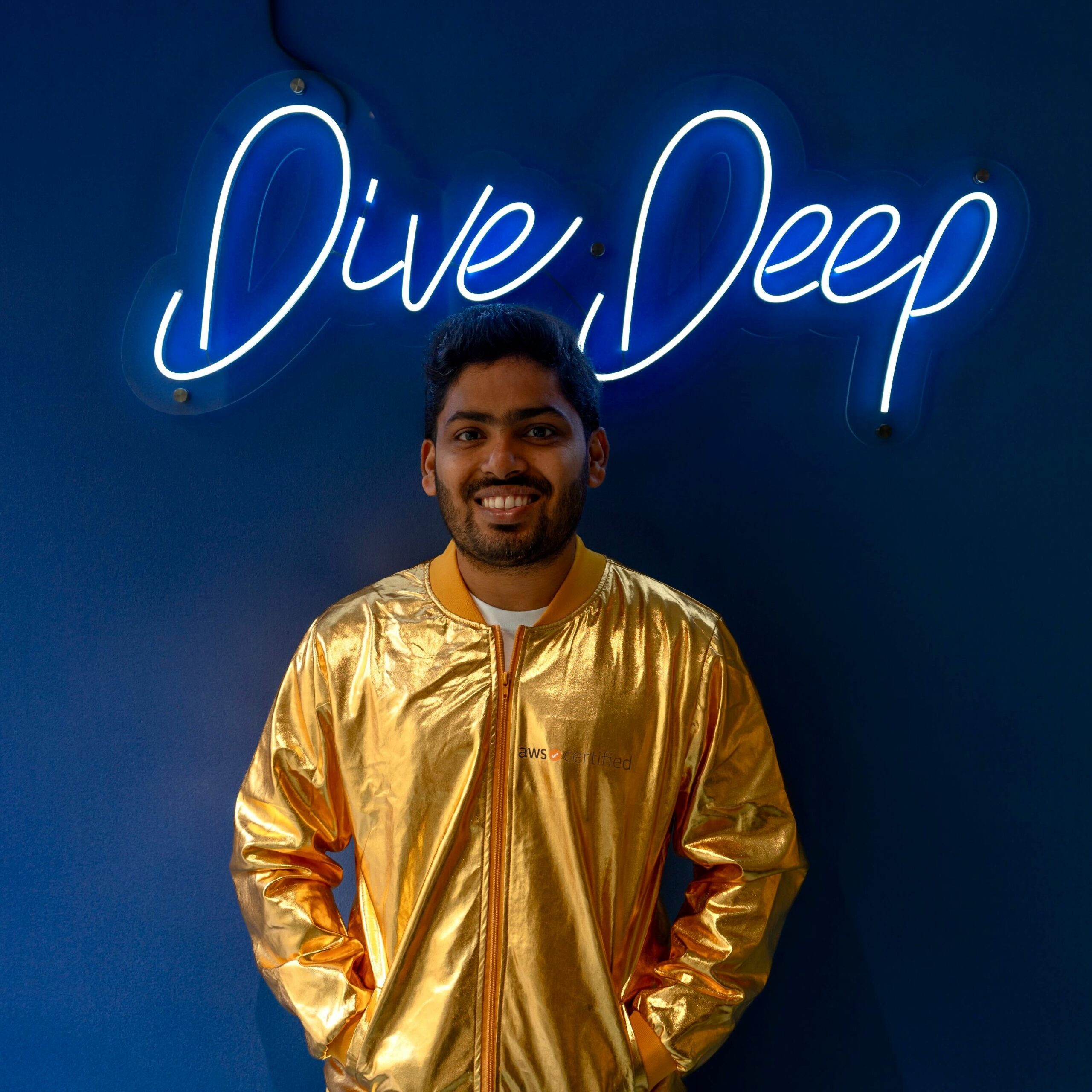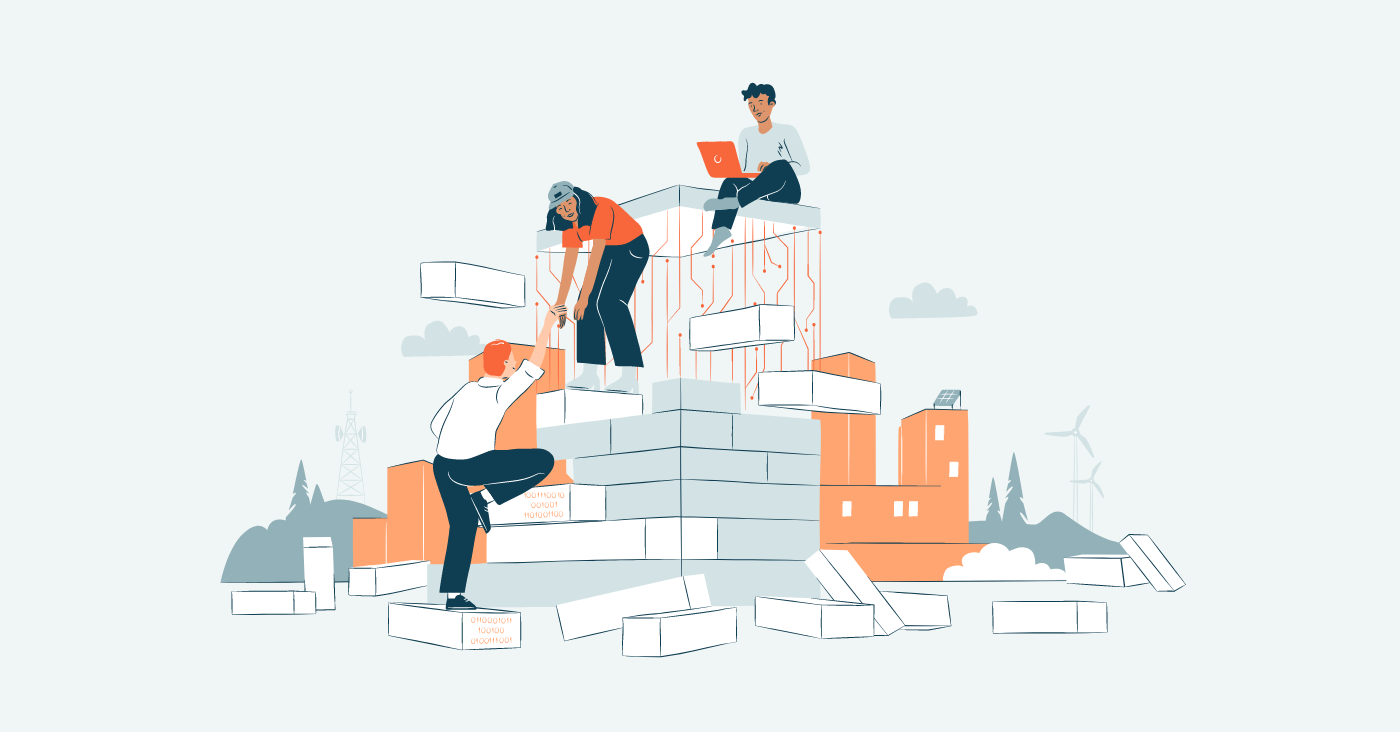What are the latest trends and the most common technologies in Cloud projects at Gofore?
When it comes to Cloud and DevOps, Gofore doesn’t try to force customers to fit a pre-made box. Our solutions are tailor-made for each customer and the goal is always to solve the problems of that particular customer. We have no pre-determined technology stacks or service bundles. Instead, we focus on the actual problem or need at hand. This means that the variety of different projects, environments, and technologies that our Cloud experts work with is immense.
The factors that influence the technology choices we make are customer needs, and customer preferences, as well as which technologies our consultants know well and which ones they’re interested in. All of this is done with continuous communication and guidance that our Cloud experts have with our customers.
To get actual data on all the things we do, we created an annual Cloud Radar survey and are excited to share the results. Although there are hundreds of people at Gofore working with Cloud technologies on a daily basis, the survey was aimed at the ones that have Cloud and DevOps at the heart of their work. More specifically, these are Cloud Specialists, Developers, and Technical Project Managers. As previously, the purpose of the survey was to find out what sort of projects they work with, what they do there, and which technologies are being used.
Download Gofore’s cloud radar results (PDF)
Type of work

The majority of Cloud Specialists and Developers at Gofore stay on the same project on a long-term basis, typically between 6 months and 2 years. The vast majority also focus on a single customer at the time. This not only allows us to build mutual trust with the customer and become a valued partner but also to truly dig deep and enable our consultants to focus on a single environment at a time.
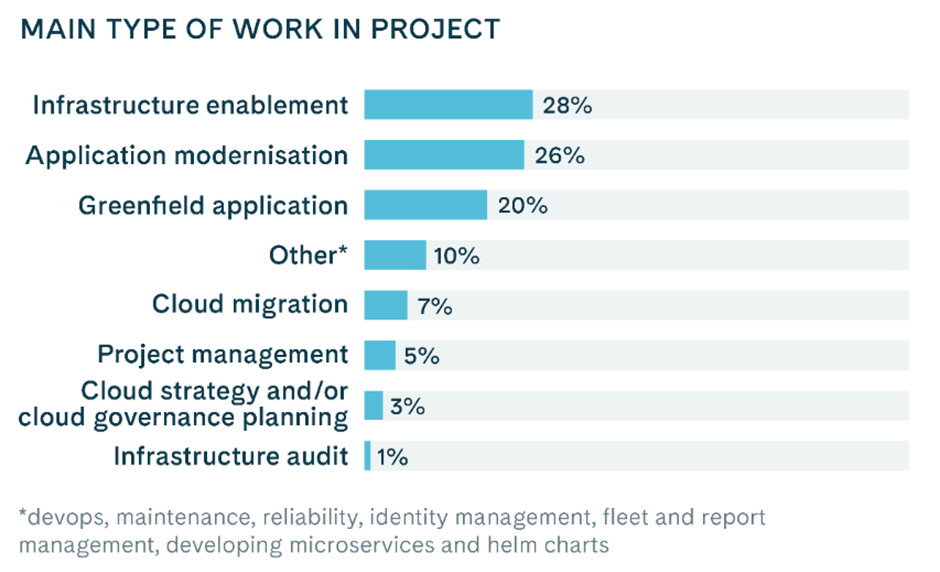
The nature of the work we do for our customers varies a lot. We do shorter gigs such as Cloud migrations, Cloud governance models, and Cloud landing zones, but the majority of our projects are long-term development either in an existing customer environment or at a Greenfield project where we start from scratch. Application modernization and web development are almost always the contexts in which we work.
When our consultants switch projects, it’s not always because the project just happens to end. Although that is one common reason, people may also wish to switch because they no longer feel that they’re developing professionally at the current project or simply wish to try something different. At Gofore, choosing projects is always done with open communication, we don’t force anyone.
Cloud capability at Gofore
At the heart of Gofore’s cloud capability are our experts. Whether working as a Cloud Specialist, Developer, or any other role for that matter, it’s them and their competence that our Cloud business is built on. That’s why we keep professional development in such high regard. Every Goforean working with Cloud has the readiness to guide our customers on their Cloud journey by for example suggesting technologies and architectures to find the solutions that best fit them.
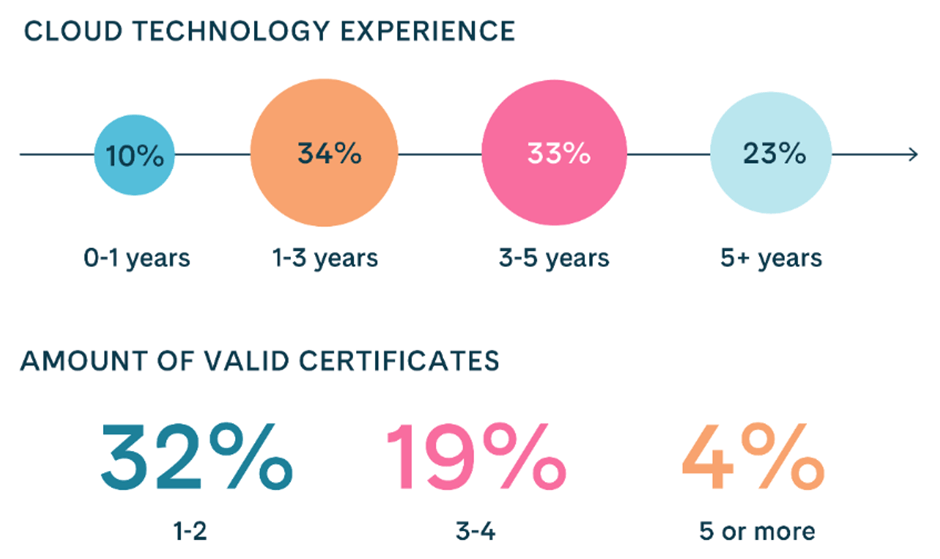
Currently over half of our Cloud experts hold at least one Cloud certificate and many have multiple. Certifications are extremely valuable and that’s why we pay bonuses for each one. Not only that, studying is considered work time and the company pays for whatever study material is required. Gofore also has a community of people discussing the latest and greatest study materials and how to pass certification exams.
Technology in everyday life
The technologies we work with most likely didn’t come as a surprise to anyone at Gofore, but now we have the data to back that up. On a quick glance, there’s something missing. That’s right, legacy. The amount of work we do with legacy technologies is minuscule, which is a testament to the digital transformation we’ve been able to help our customers achieve. Naturally, it’s also great news for our Cloud Specialists and Developers who wish to focus on their personal and professional development.
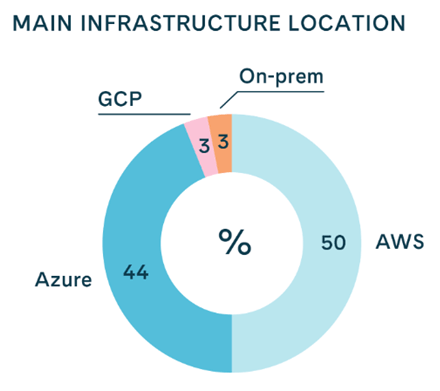
Our current use rate between Amazon Web Services (AWS) and Microsoft Azure is roughly 50/50. Although Gofore got started mostly using AWS, Azure usage increased considerably a few years ago, after which the relative rates have stayed the same. Google Cloud Platform (GCP) on the other hand is in the minority. While our consultants like it and we have a number of GCP-certified people, the customer field simply hasn’t embraced GCP. To a degree, these use rates reflect those of Finland as a whole, not just within Gofore.

Microservices and event-driven architectures are at the core of modern web development, and it shows in our data as well. Most of our customer environments tend to utilize all three abstraction levels: virtual machines, containers, and serverless infrastructure, and each of them certainly has its place. However, the vast majority of our customer workloads run in containers. This emphasizes the importance of container orchestration, and the fact is that 77% of our Cloud projects utilize some form of it. Kubernetes has been the obvious number-one buzzword for the last few years. Whether it’s in Azure Kubernetes Service (AKS), AWS Elastic Kubernetes Service (EKS), or hosted otherwise, usage of Kubernetes continues to be on the rise. However, simpler container orchestration services such as AWS Elastic Container Service (ECS) and Azure Containers endure and are often a better fit for smaller projects.
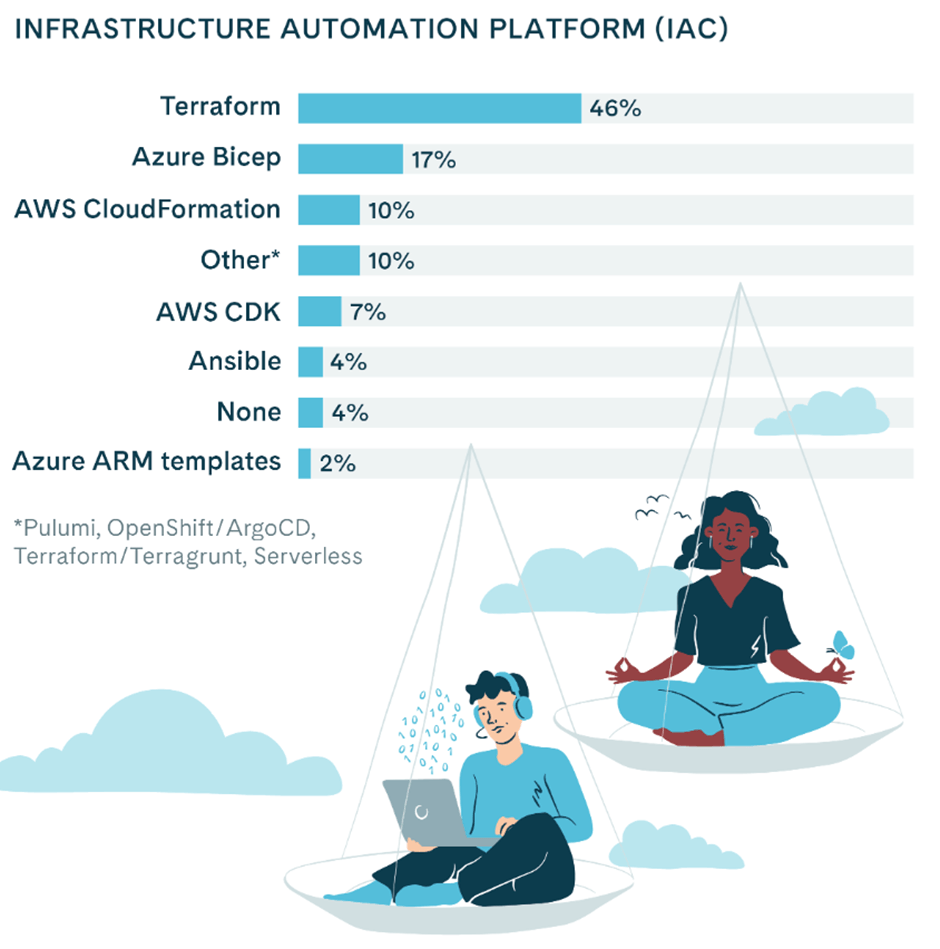
While the days of ClickOps aren’t gone just yet, we do try to keep it to a minimum. 96% of our Cloud projects employ some type of Infrastructure as Code (IaC) tool. It wasn’t that many years ago when AWS CloudFormation, Azure Resource Manager (ARM), and Terraform seemed to be neck and neck, but since then Terraform has taken the lead by far. More advanced provider-specific IaC tools have been embraced by our experts as well, those being Azure Bicep and AWS Cloud Development Kit (CDK). The latter especially has been very popular with our Developers.
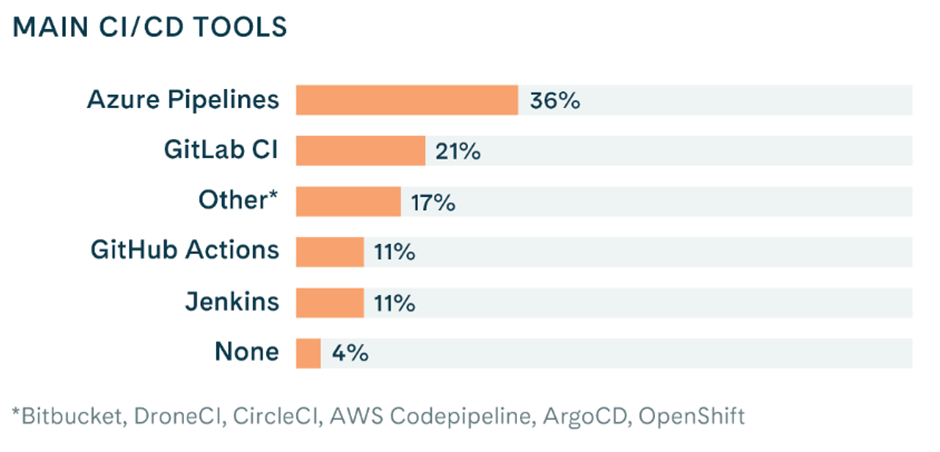
Similarly to IaC, CI/CD has also become a mainstay in Cloud projects. 96% of our projects use it and the majority utilize managed services such as Azure Pipelines or GitLab CI. While many projects choose to run the CI/CD workers themselves, hosting the whole CI/CD tool itself is becoming rare. This can be seen in the falling usage rate of Jenkins especially. The tool choice is often strongly connected to the customer’s existing business requirements and information security practices.
Closing words
Due to the nature of work that Gofore does in the Cloud, it’s no surprise that the Cloud radar results very closely resemble those of Finland as a whole. Public Cloud, containers, infrastructure automation, and CI/CD are at the very essence of modern web development, and since we aren’t locked in with pre-determined technology stacks, we don’t believe that our customers should be either. Because of this, our experts are able to continuously develop their skill set and ride the wave of current trends. It’s no wonder that we have such an active Cloud community at Gofore.
While the survey was aimed at people doing most of their work with Cloud infrastructure specifically, it’s worth noting that hundreds of people at Gofore work with Cloud on a daily basis. There aren’t many web development, data/AI, or test automation projects that don’t involve Cloud in some way. The trend continues to be upward and there’s no end in sight.
Survey was aimed for Cloud specialists, Software Developers and Technical Project Managers. Altogether we received 75 responses.
Analysis written by Antti Vitikainen and Tero Vartianen
Project radar by Tiia Hietala
Visuals by Vilhelmiina Järvelä and Heli Härkönen
